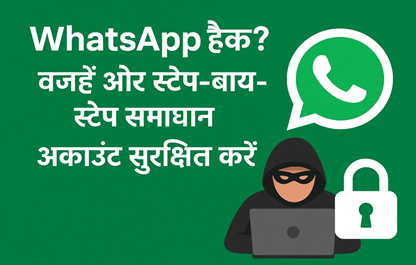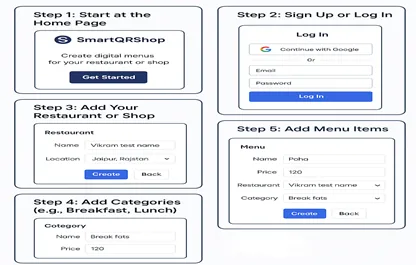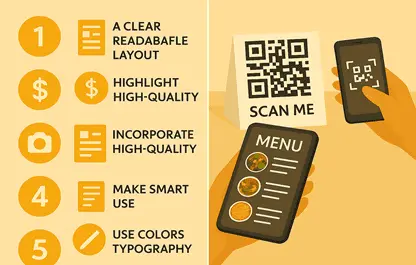How a QR Code Menu Works: A Simple Guide
QR code menus are transforming how restaurants serve customers. This guide walks you through how they work—from scanning the code to accessing a digital menu—making dining safer, faster, and smarter.
Established
Worldwide
Rating
How a QR Code Menu Works: A Simple Guide
In recent years, more restaurants are turning to digital menus for safety and convenience. QR code menus have become a popular choice for many diners and owners alike. During the COVID-19 pandemic, where contactless options became vital, QR codes gained rapid popularity. Understanding how QR code menus work can help restaurateurs make smart choices and give customers a better experience. Let’s explore how this technology simplifies dining.
What Is a QR Code Menu?
Definition and Overview
A QR code menu is a digital version of a traditional menu. Instead of handing out paper menus, restaurants use a QR code that customers scan with their smartphones. When scanned, the QR code opens a webpage or app showing the menu details. This digital approach minimizes contact and keeps menus safer and cleaner. QR code menus also cut costs because there's no need to print new paper menus for every change.
Types of QR Code Menus
There are two main types of QR codes used for menus: static and dynamic.
- Static QR Codes are fixed once created. The link inside the code never changes. If a restaurant updates the menu, they need to generate a new QR code. These are simple but less flexible.
- Dynamic QR Codes allow updates without changing the code. They redirect to a webpage that can be altered anytime. This makes managing menus easier, especially for businesses with frequent specials or seasonal dishes.
For example, a cafe might use static codes for their main menu but switch to dynamic codes for daily specials.
How QR Code Menus Work
Generating a QR Code for a Menu
Creating a QR code is straightforward. Restaurants can use online tools or their POS systems. They simply enter the link to the digital menu—either a webpage or PDF—and generate a QR code. The key is to ensure the linked content is mobile-friendly, so customers see a clear, easy-to-read menu on their phones.
Scanning a QR Code
Customers scan QR codes using their smartphones. Most phones have built-in camera apps that can read QR codes directly. Some older devices might need a free QR code scanner app. When detected, the phone prompts the user to visit the link embedded in the code.
Accessing the Menu
Once scanned, the QR code redirects to the digital menu immediately. It can open in a browser, download a PDF, or launch a dedicated app if the restaurant offers one. Some restaurants embed menus on their website, while others may use third-party hosting platforms for ease of management.
Updating the Menu Content
Owners love dynamic QR codes because they allow real-time updates. Changing prices, adding new dishes, or updating photos can all be done instantly without changing the QR code. This flexibility helps keep menus fresh and accurate, reducing customer confusion.
Implementation and Best Practices
Designing an Effective QR Code Menu
Location matters. Place QR codes where customers can see and scan easily—on tables, at entrance points, or near the checkout. Make sure the codes are large enough and in well-lit areas. For accessibility, use contrasting colors and clear instructions so everyone understands how to use the codes.
Security and Privacy Considerations
Use reputable QR code generators and secure hosting sites. Avoid linking to unknown sources. Protect customer data by ensuring any feedback forms or online ordering systems are encrypted and compliant with privacy laws.
Encouraging Customer Engagement
Help customers feel comfortable using QR codes with simple instructions like, "Scan here for our menu." Consider adding icons or signs explaining how to scan. Plus, tie the QR codes to contactless payment or order options to speed up service.
Real-World Examples of QR Code Menu Success
Many restaurants report higher efficiency and happier customers after switching to QR code menus. During the pandemic, a pizza place reduced wait times by letting customers order via QR codes on the table. Data shows that over 70% of diners prefer digital menus for quick access.
Industry experts see QR codes as an essential part of future restaurant tech. They believe contactless dining options will keep growing, making it easier to adapt to changes and customer demands.
Future Trends and Innovations
Expect QR codes to get even smarter. They might link to contactless payment systems, allowing full transactions through a scan. Augmented reality (AR) features could surprise diners with 3D images or videos of menu items. Plus, restaurateurs will have access to analytics showing what dishes customers look at most—helping refine their offerings.
Conclusion
QR code menus work by linking a simple code to a digital menu accessed on a smartphone. They improve safety, cut costs, and make updates easier. These menus are quick to set up and easy for customers to use, making dining more efficient and safer.
For restaurant owners, starting with dynamic QR codes is a smart move. Focus on creating a clear, accessible menu, and keep content fresh. As technology advances, QR codes will keep growing as a vital tool in the hospitality industry. Embrace this simple tech to boost your customer experience and streamline your operations.
Recent Blogs

व्हाट्सएप हैक: कारण, तुरंत समाधान और सुरक्षा — स्टेप-बाय-स्टेप गाइड
यह पोस्ट बताएगी कि WhatsApp हैक के सामान्य कारण क्या हैं, कैसे तुरंत अकाउंट रिकवर करें, चैट में ऑटो-मीडिया डाउनलोड को बं...

How to Create a Restaurant or Shop Menu on SmartQRShop
Learn how to set up your restaurant or shop and create a digital menu using SmartQRShop in just a few steps.

Top 5 Design Tips for Creating an Attractive Restaurant Menu
Learn the top 5 practical and proven design strategies to make your restaurant menu more engaging, on-brand, and convers...